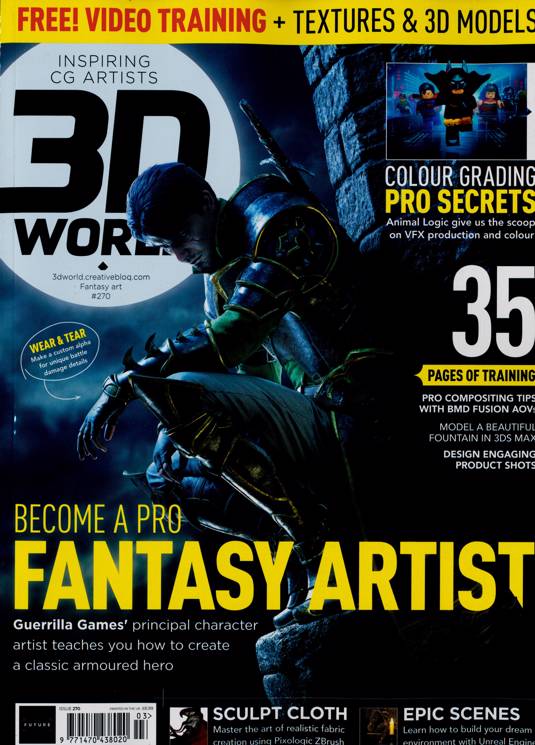

Its office is a cavernous, open-format space but lacks the stereotypical Silicon Valley flair there's not a Ping-Pong table or beanbag chair in sight. You wouldn't readily surmise the company's unicorn status from a trip to its Redwood City, California, headquarters. While most inventions have yet to materialize in our lives, Carbon is a very real company - real to the tune of $680 million in publicly disclosed funding and a valuation of $2.4 billion. The TED video fits into a certain genre of optimistic scientific content that proliferated on social media news feeds before they became political battle grounds. (Plus, they look 3D printed.) These are the reasons why the technology hasn't taken off. The final objects have striations where they're structurally weak, which is why 3D printing is okay for prototyping but not creating final products. DeSimone says that the traditional approach is really 2D printing over and over again, one layer on top of another. Speed is a major advantage CLIP has over 3D printing as we've previously known it, but it's not the only one. It's done in about six minutes.Īt the time, a typical 3D printer would've required as long as 10 hours to produce the same small ball. This is the moment when many members of the audience likely stop paying attention to DeSimone to focus instead on the object emerging from the soup.

#3d world magazine issue 200 android#
"It has a symmetry such that you can't injection-mold it, you can't even manufacture it through milling." As DeSimone explains that such an object can only be made by a 3D printer - one inspired by Terminator 2's liquid metal T-1000 android no less - the inverted stage of a Carbon machine descends into a puddle of red goo. "It is not manufacturable by traditional manufacturing techniques," he says. In his hand is a red ball about the size of a golf ball it looks like an atomic model, or a toy. Clean shaven with a business-appropriate haircut and wearing professorial tweed and a blue Oxford (sans the expected if not obligatory bow tie), DeSimone is perhaps not the vision of a revolutionary scientific mind more Ford than Einstein, and certainly dissimilar from Musk, Dorsey and Zuckerberg.
#3d world magazine issue 200 free#
Joe DeSimone debuted CLIP to the world onstage in a 2015 TED talk, which is now free to view online. In 2016, President Obama honored him with the National Medal of Technology and Innovation, the highest award for such achievements. He's one of only 25 people to have been elected to each of the US's trifecta of National Academies of Sciences, Medicine and Engineering. DeSimone is a materials scientist, a chemist and an inventor with more than 200 issued patents. The technology powering Carbon's printers was invented in 2013 by a team of scientists helmed by Joseph DeSimone at the University of North Carolina at Chapel Hill. That's because back then, this technology didn't exist. This is not the slow, bottom-up, layer-by-layer version of 3D printing that came to fore in the early 2000s. They haven't, and yet here they are, like so many geometric stalactites. An inverted stage hovers over a puddle of liquid material slowly, the stage rises, pulling the swabs from the pool as if they'd been there all along. Witnessing a batch of Lattice Swabs emerging from one of Carbon's unique 3D printers is even more impressive.

It turned out that only two companies in the world made flexible six-inch-long brain ticklers, one in Maine and one in Italy. These innocuous medical implements revealed the lag and fragility of the global manufacturing supply chain in the early days of the COVID-19 pandemic when, as testing ramped up, supplies ran low. Take, for example, one of 3D printing's most impressive recent outputs: a nasal swab. Thirty years before Westworld’s present timeline, 3D printing still inhabits a somewhat boring reality. Blink (or press the "Skip Intro" button) and you'll miss a robotic arm drawing a synthetic tendon onto a horse, bison or human, depending on which season you're watching. The show lays the foundation of its premise in a moody intro sequence set to an ominous piano soundtrack as it depicts the manufacturing of these futuristic automatons.

Subscribe todayĪs all good sci-fi stories do, Westworld's hinges on our acceptance that the reality it presents is possible in this dimension or another. A version of this story first appeared in Gear Patrol Magazine.


 0 kommentar(er)
0 kommentar(er)
